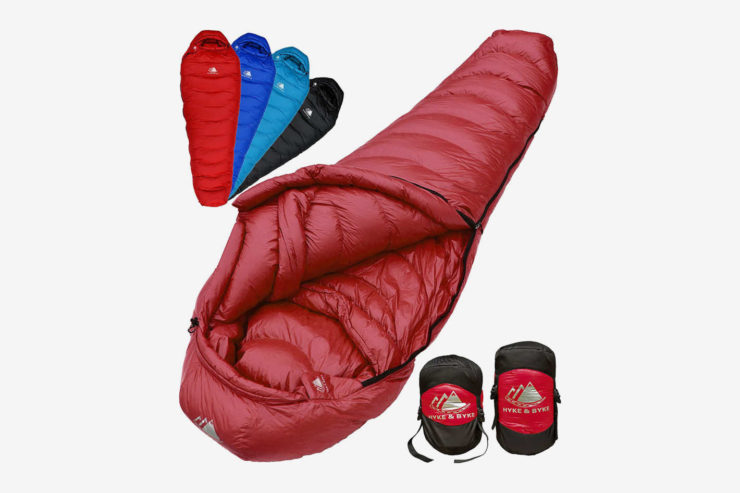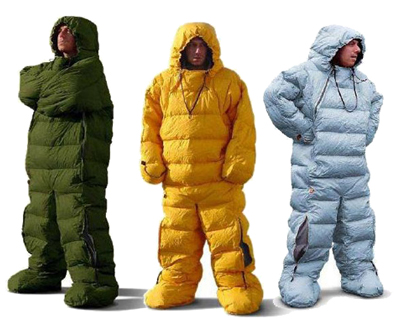How to choose the right sleeping bag

How to choose the right sleeping bag
Posted on
Choosing the Right Sleeping Bag
Sleeping bags come in a whole variety of materials, styles, warmth ratings and colour. Choosing the right bag is integral to a comfy, warm night’s sleep. Here are our suggestions on what to consider and look for when purchasing a sleeping bag. We hope this helps you make the right sleeping bag selection whether you are looking to buy or borrow from a friend.
Temperature Ratings
The temperature ratings for sleeping bags can vary from each manufacturer and are subjective to each individual. Are you a warm or cold sleeper? If the region where you’re camping has a night temperature of about 5 degrees. A 0-degree rated sleeping bag will be fine for a warm sleeper however, for someone who feels the cold or has low blood circulation they should be looking at a lower temperature rating like -5 degrees.
A good rule of thumb to gauge the temperature rating of your sleeping bag is to take the minimum temperature of the particular region you are travelling to or plan to travel to and subtract it by 10 degrees. Remember it is always easier to cool off than it is to get warm when it comes to sleeping bags.

Sleeping Bag Shape
Once you figure out which temperature grade to look for in a sleeping bag, the second most important thing is to find the shape of the sleeping bag that best suites you. There are 3 standard shapes, Mummy; Barrel; and Rectangle. Each shape has its benefits but at a pinch, any style of bag will do!
If your main goal is to stay warm, the Mummy shaped bag will keep you toasty warm in all kinds of terrain. It has the best warmth to weight ratio but can restrictive in terms of movement and comfort. The zipper usually only runs a short length of the bag; some manufacturers have made mummy bags with zips that go from top to bottom but then you are compromising on the bags ability to retain heat/warmth.
At the other end of the spectrum, Rectangle sleeping bags provide maximum comfort and are the best option if you like to spread out when you sleep. You can open up the bag and use it as a blanket or zip multiple bags together (same shape and brand) for warmth and coziness. The zipper usually runs from top to bottom and around the foot edge of the bag for extra ventilation. Some brands will include a separate foot edge zipper for those of us who like to stick their feet out when we sleep.
If you want a bit of both worlds; warmth and mobility, the Barrel bag is the happy medium. The barrel shape of this style of bag gives you room to move around but the slightly tapered shape helps keep the heat in. Certain styles have a wider foot area so that the shape is actually more like a cone.
Fit
Once you choose the shape of the bag that suits your needs, make sure it’s the right size! Make sure the length of the sleeping bag will fit the length of your torso AND your limbs. It is also good to make sure the width of the sleeping bag will fit your body shape as well. If you have broad shoulders, it’s good to check that you fit comfortably into the sleeping bag.
Filling: Synthetic or Down?
Synthetic Insulation
- Costs less than down
- Will provide some insulation even when damp/wet
- Dries fast
- Hypoallergenic
- Usually heavier than down
- Easy Care
Down Insulation
- Lightweight and packs down small
- More durable than a synthetic bag when cared for
- Much more expensive
- Best used in dry, cold weather
- Often has water-resistant treatment to protect from damp/wet conditions
- Little/no insulation when wet
- Warmer than synthetic in dry, cold weather conditions

*Want mobility and warmth? Maybe you should give the sleeping bag onesie a go. Great for curling up by the campfire!
Extras and Accessories
Here are some extra things to look for when searching for your perfect sleeping bag.
Sleeping Bag Liner
Sleeping bag liners are great. They are lightweight, take up very little space and come in a variety of materials (cotton, silk, fleece and polypropylene are the most common.) Sleeping bag liners are all designed to keep your sleeping bag clean and some can add a little extra warmth. If the temperatures are warmer than you had expected, sleeping in just the liner is quite nice. You can use your sleeping bag for extra padding between the ground and you or opened-up over the top like a doona.
Hoods
These are almost a necessity when purchasing a sleeping bag for cold climates but I would still look for one when purchasing a sleeping bag for warmer weather. The hood can be rolled up towards the bag to be used as a pillow in a pinch or act as extra padding between your head and the floor.
Sleeping Mat
A sleeping mat will add a level of comfort and softness between you and the ground. It will also help keep the damp and moisture from the ground seeping through your sleeping bag.
Storage Bag/Stuff Sack
Great for keeping your sleeping bag in long-term storage – although, some will argue that it is better for the insulation of sleeping bags if they are not stored in compression.
Snag-Free Zippers
Look for larger zippers with sturdy teeth as these are less likely to snag in the material of the sleeping bag and will zip and unzip more smoothly. If the zipper has a stiff backing along the length of the zipper, then it will prevent the fabric from bunching.
Fabric: The outer shell of a sleeping bag is typically made of a ripstop nylon or polyester. Many shell fabrics are also treated with a durable water repellent (DWR) finish to prevent moisture from soaking through and dampening the fill. Lining fabrics, on the other hand, often have a brushed texture for added softness.
Baffles
A sleeping bag’s baffles are the chambers that contain the bag’s insulation. With down bags, you’ll see a lot of different configurations of these, but the two most common types are vertical and horizontal baffles. Synthetic bags’ baffles are mostly just for show, so don’t worry about them too much.
Camping Pillow
A pillow will almost always improve your camping/sleeping bag experience. There are many types and styles you can buy or make one out of your jumper in a pinch.
Neck Muff
This is one that gets over looked quite often but a neck muff will help hold the warmth in the bag – similar to a door snake to keep the draft out.



